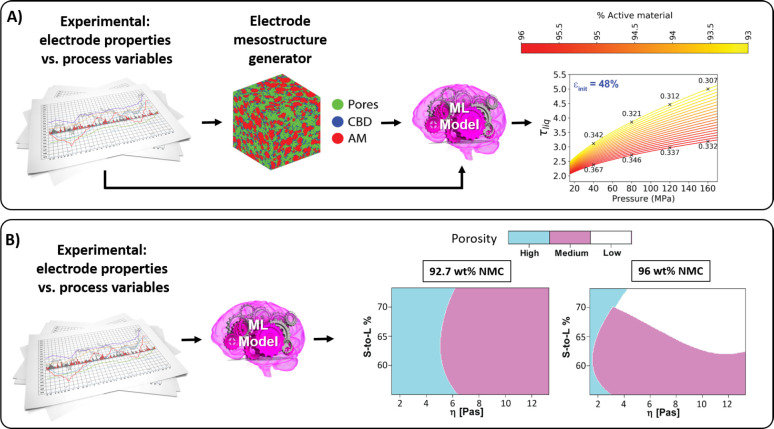Figure 2.
(a) Example of a workflow coupling experimental data, a surrogate electrode mesostructure predictor, and ML (Sure Independent Screening and Sparsifying Operator) to predict the impact of electrode composition, initial porosity, and calendered pressure on the electrode tortuosity factor. [Reprinted with permission from ref (39). Copyright 2020 Elsevier.] (b) Example of a classification machine learning algorithm (Support Vector Machine) able to predict the impact of the percentage of NMC active material, solid-to-liquid ratio, and viscosity of the slurry on the final porosity of a lithium ion battery positive electrode. [Reprinted with permission from ref (38). Copyright 2019 Wiley-VCH GmbH.]

